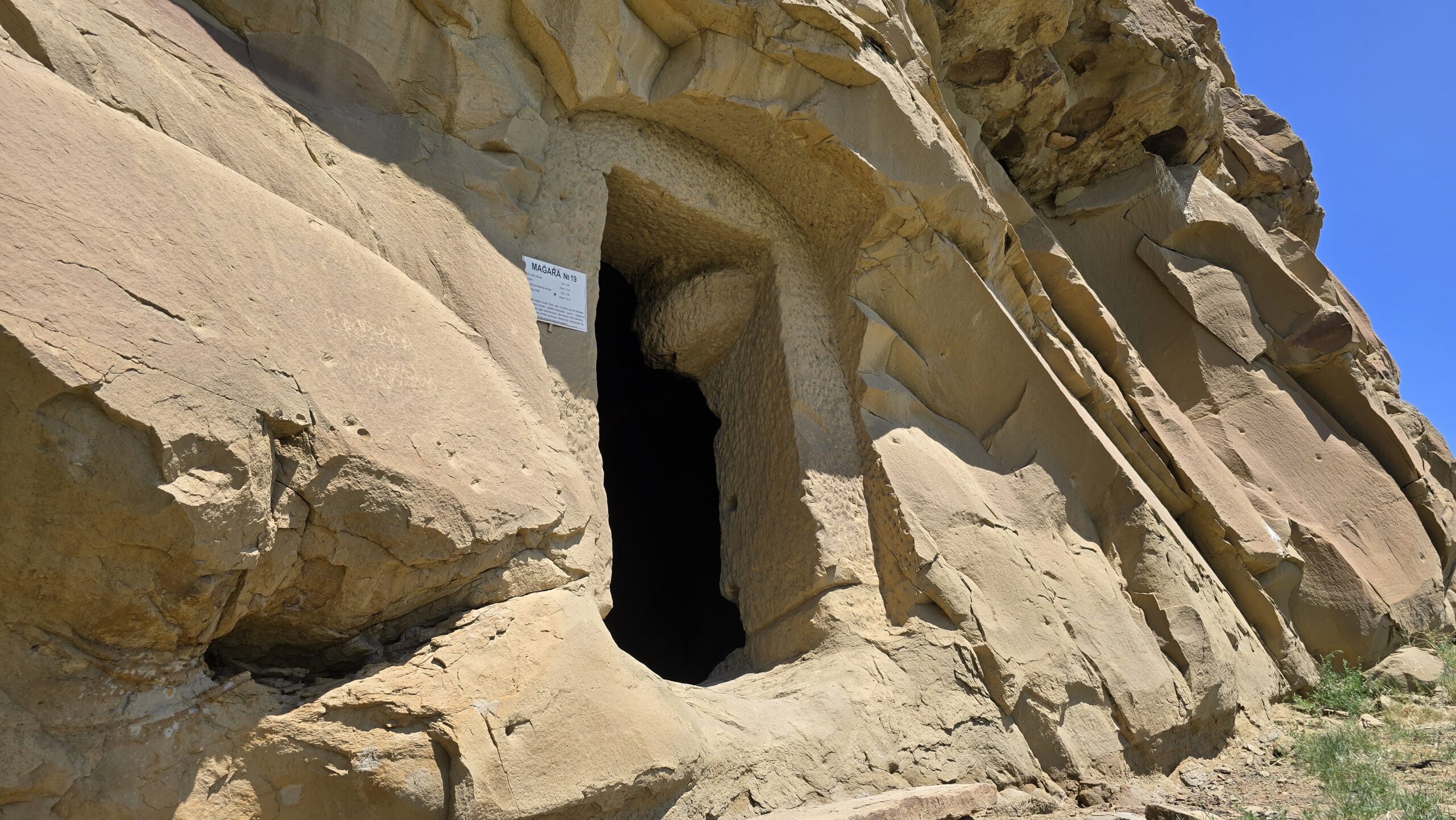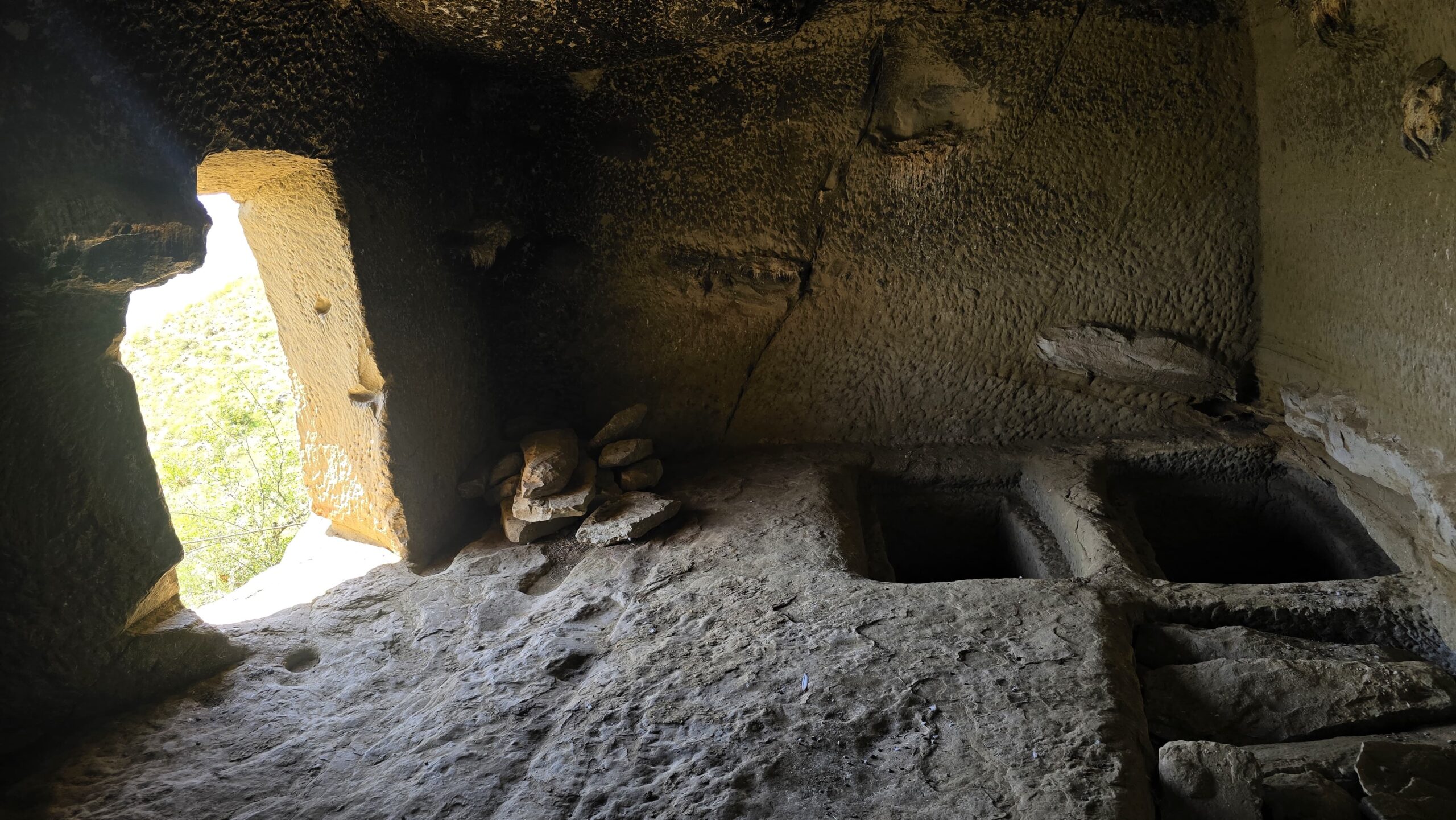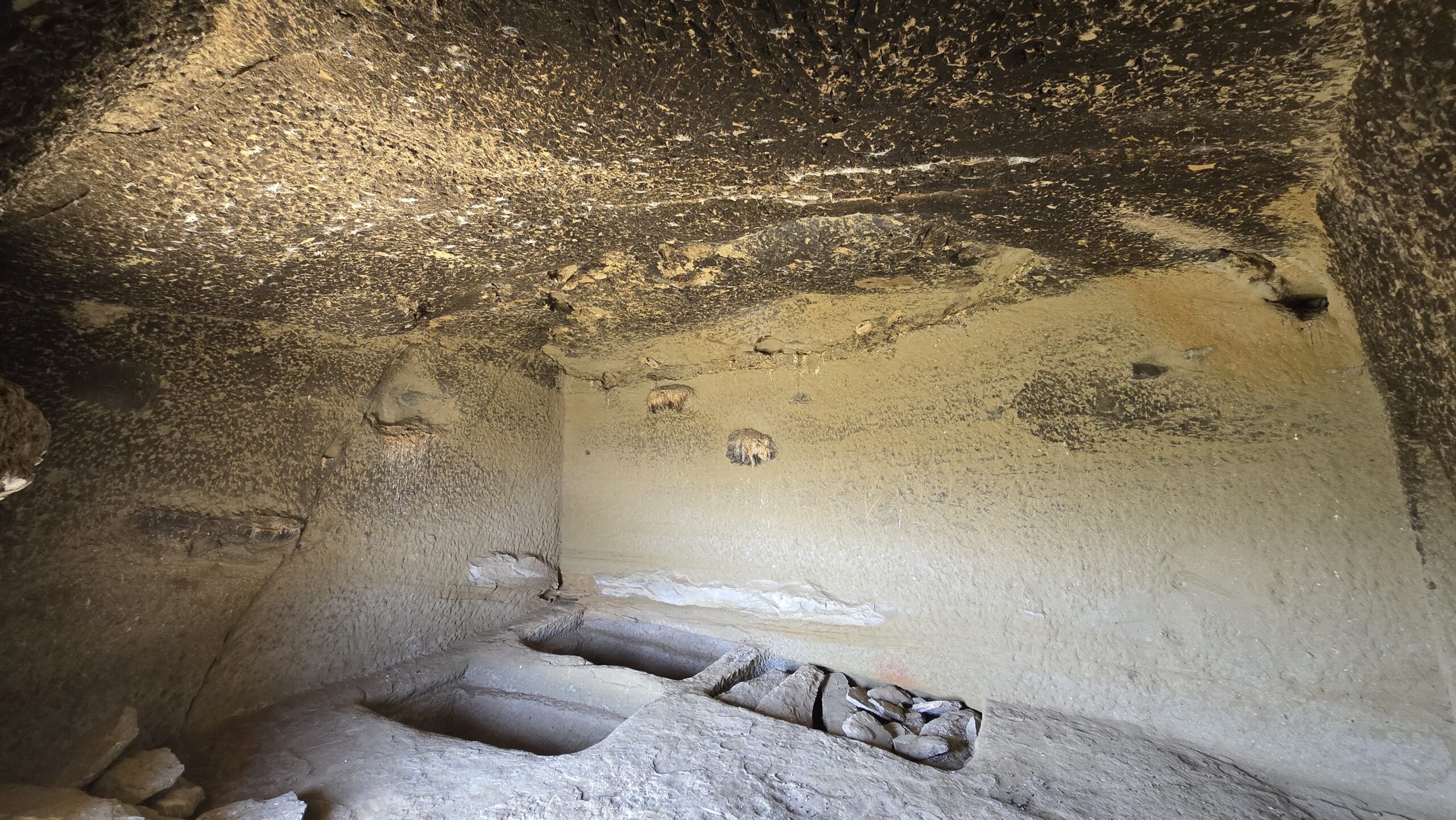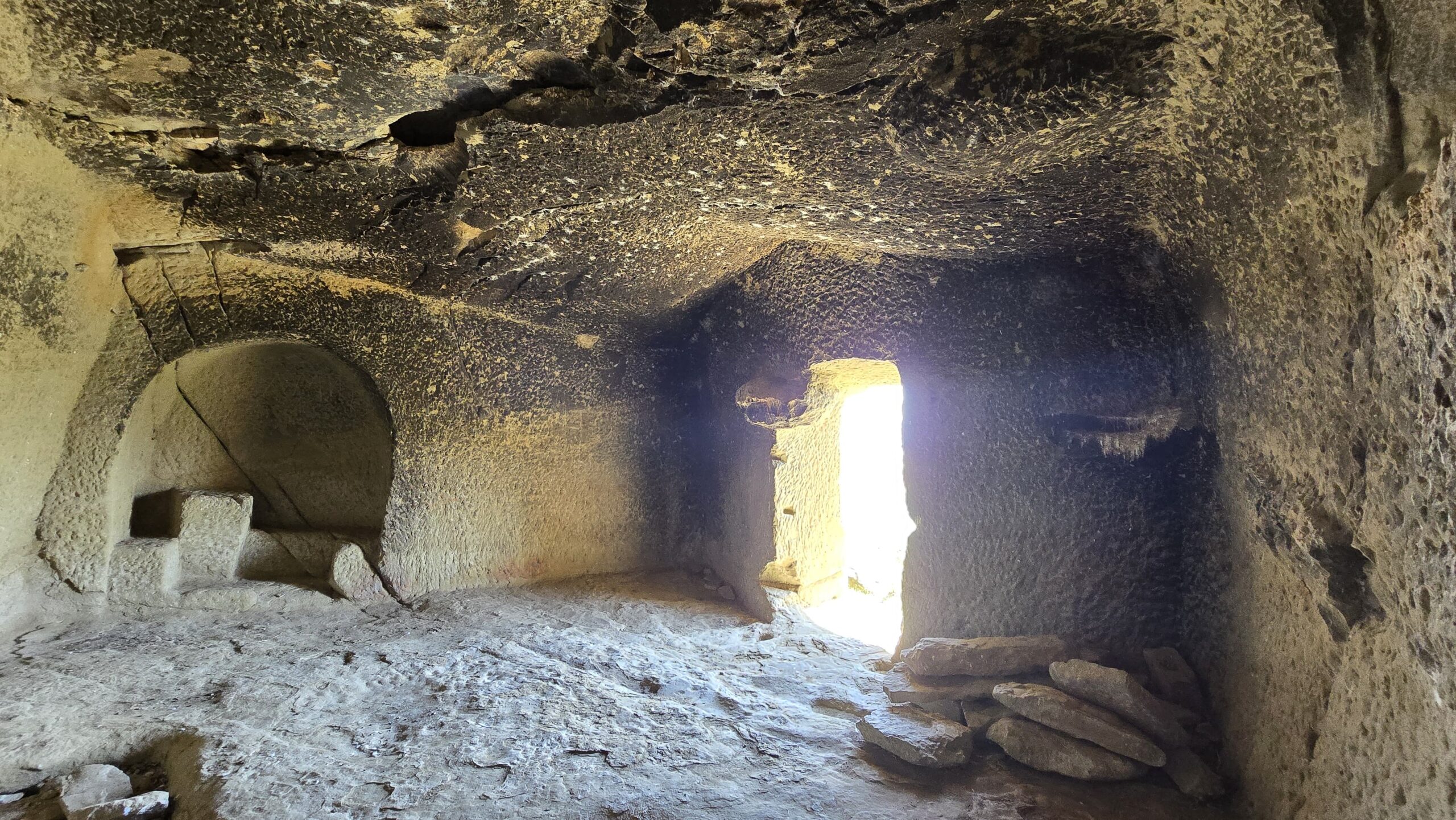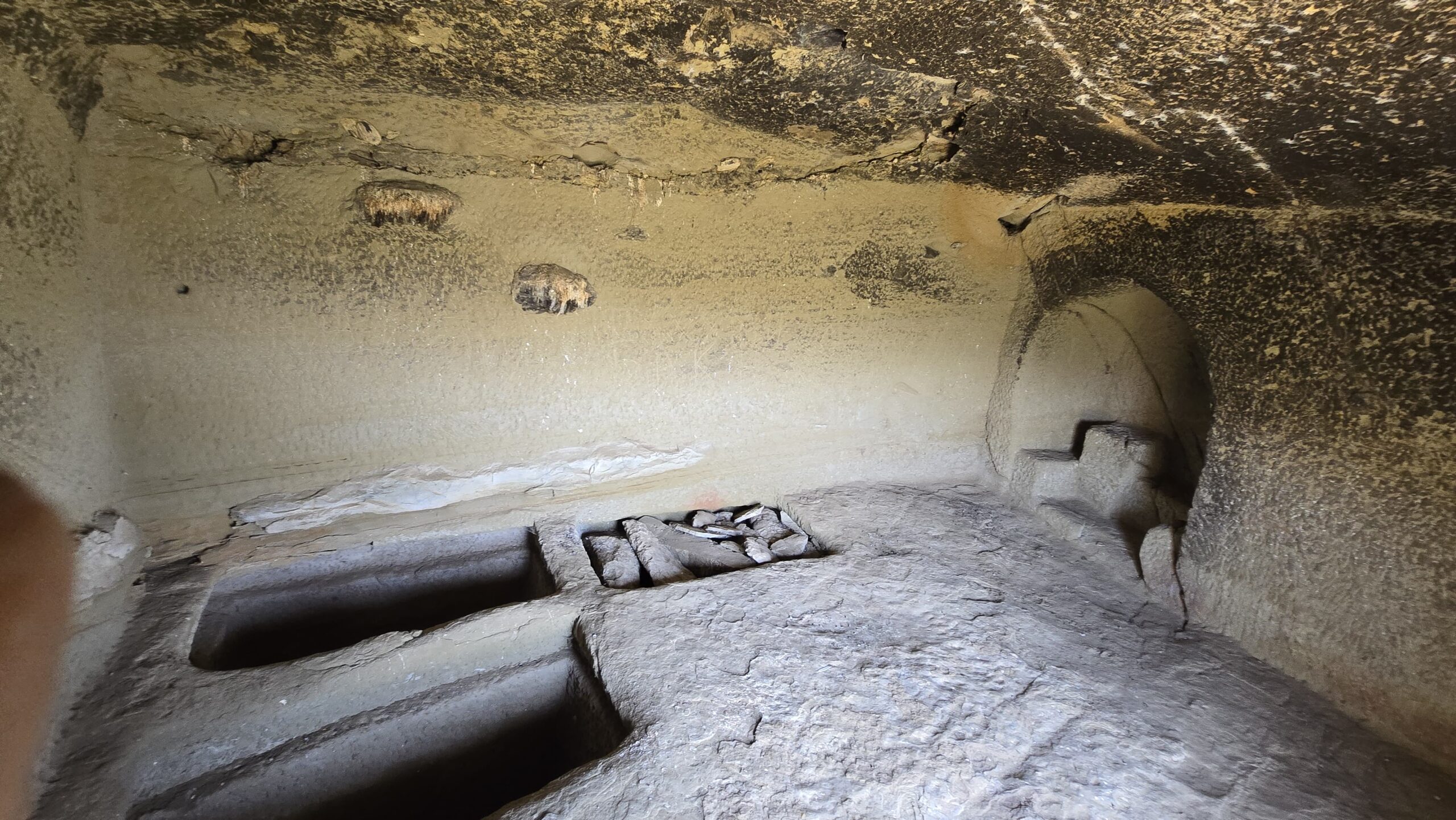CAVE No. 19
Period: Early Middle Ages
Inventory
Location: Qatardagh Ridge
Keshikchidagh State Historical and Cultural Reserve
Width: 5.25 m
Length: 5.50 m
Height: 3.00 m
Area: 32 m²
Cave No. 19, located within the territory of the Keshikchidagh State Historical and Cultural Reserve, in the Qatardagh Ridge, is a unique archaeological monument dated to the Early Middle Ages. Based on its structure and planning, it represents an artificially constructed burial chamber with a form close to a rectangle — that is, a crypt-type structure.
In terms of its dimensions, the cave differs from other similar monuments: it measures 5.25 meters in width, 5.50 meters in length, and 3 meters in height, with a total area of 32 m². These proportions make it significantly larger and more prominent than neighboring monuments.
Archaeological investigations revealed three separate burial chambers inside the cave. Excavations uncovered human skeletons within these tombs, indicating the site’s use for burial ceremonies and demonstrating that the area was not only a place of habitation but also rich in ritual complexes. Preliminary anthropological observations of the skeletal remains provide valuable information about the biological and ethnic composition of the population that once inhabited the region.
At present, the human remains are preserved within the cave. Their discovery and documentation underscore the considerable cultural and religious significance of the Keshikchidagh area. Such caves are viewed not only as dwellings but also as multifunctional complexes that fulfilled ritual and funerary roles. This aspect holds particular importance for the study of the social and cultural structures that developed in the western Caucasus region, especially in the Jeyranchol massif, during the Early Middle Ages.
